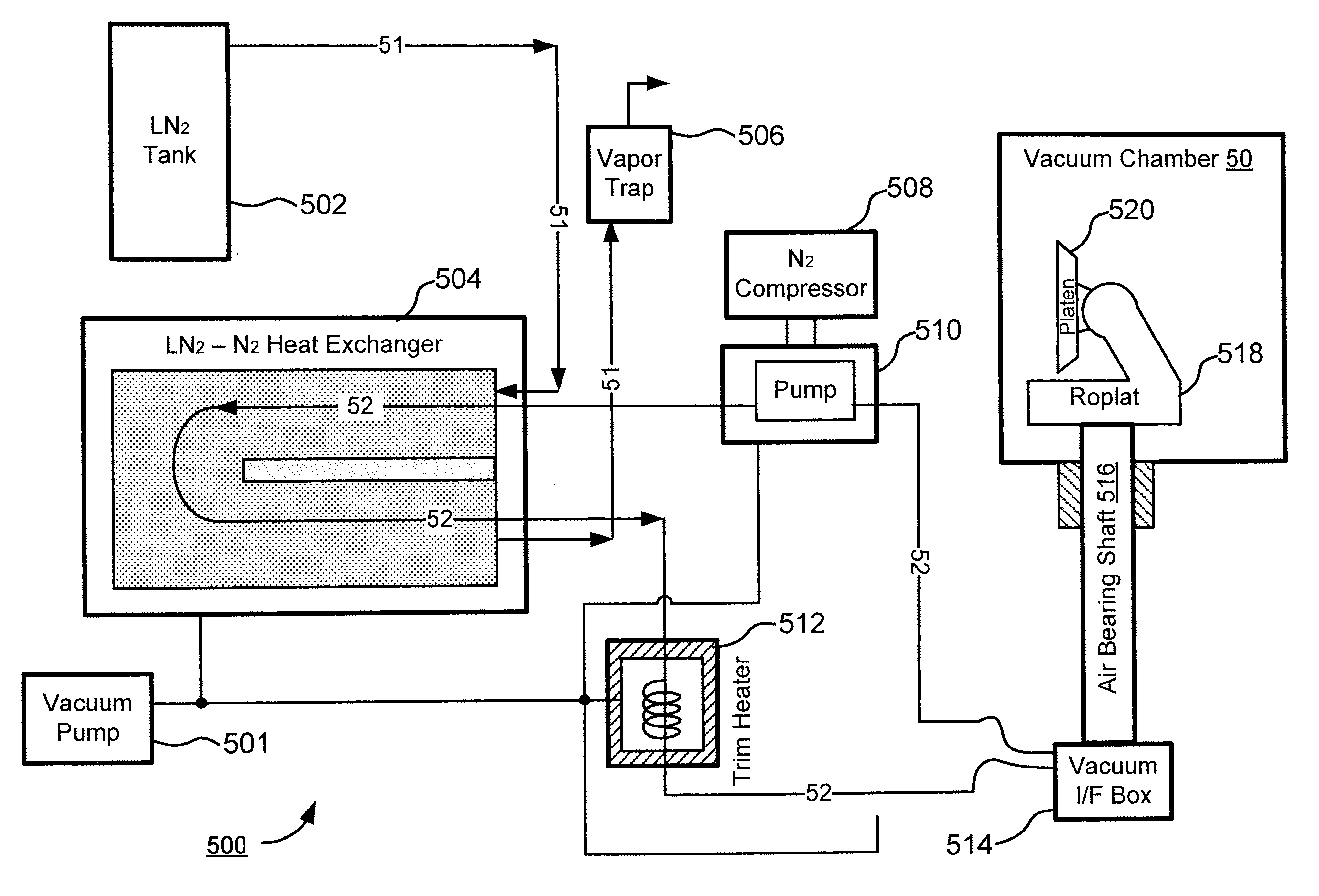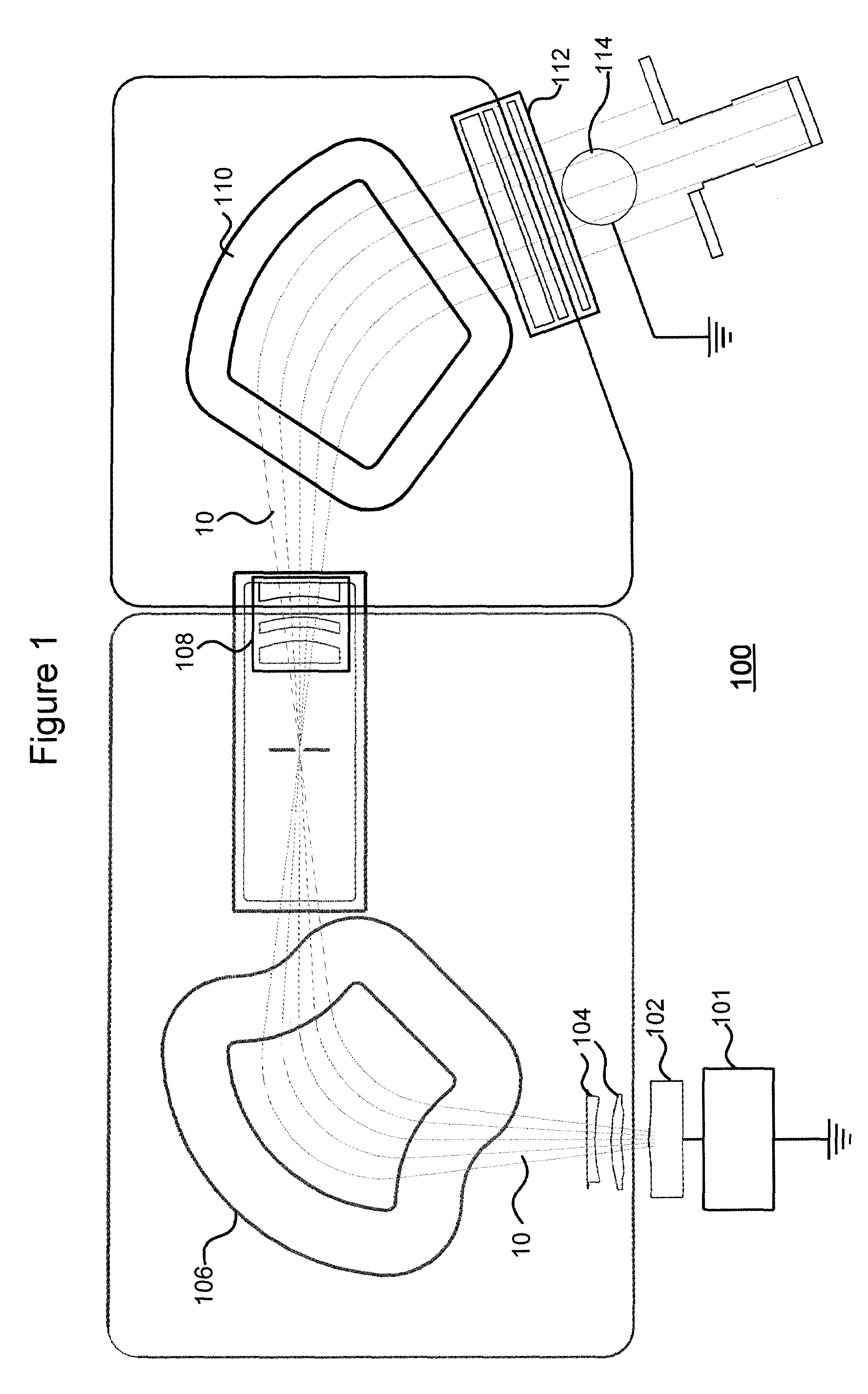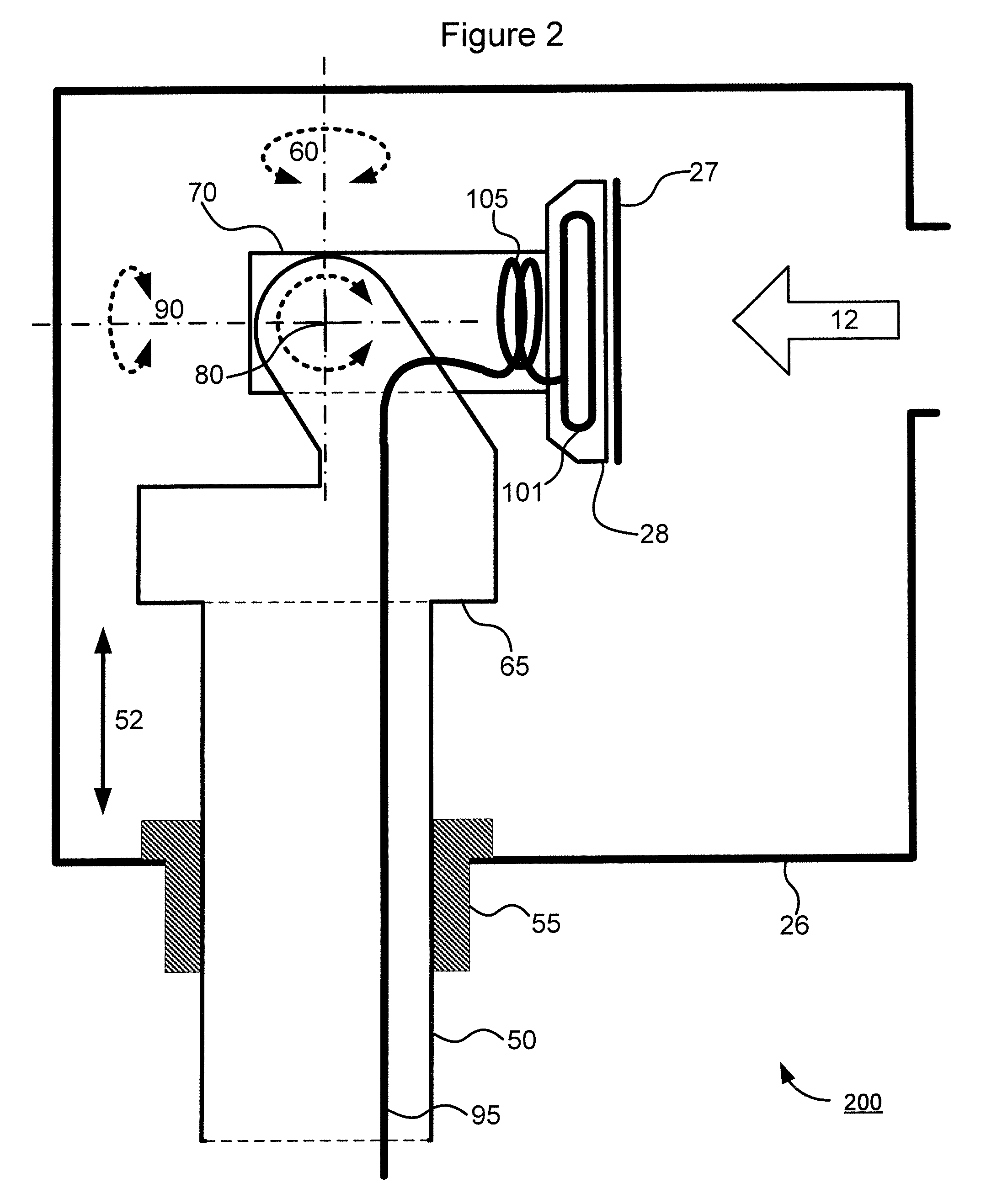Techniques for low-temperature ion implantation
- Summary
- Abstract
- Description
- Claims
- Application Information
AI Technical Summary
Benefits of technology
Problems solved by technology
Method used
Image
Examples
Embodiment Construction
[0023]Embodiments of the present disclosure facilitate direct wafer cooling during low-temperature ion implantation with an improved design of a wafer support and cooling system. In an ion implanter, rigid coolant pipes may be interconnected and coupled to a platen via one or more rotary bearings, wherein the rigid coolant pipes accommodate coolant circulation at a relatively high pressure and the rotary bearings accommodate platen motions. The rigid coolant pipes may be insulated with a vacuum casing to prevent heat loss and condensation. A gaseous coolant may be preferable since a minor leak will not contaminate the ion implanter. More precise control of wafer temperature may be achieved by incorporating a heating element into the cooling system.
[0024]The techniques disclosed herein are not limited to beam-line ion implanters, but are also applicable to other types of ion implanters such as those used for plasma doping (PLAD) or plasma immersion ion implantation (PIII).
[0025]FIG. ...
PUM
| Property | Measurement | Unit |
|---|---|---|
| Temperature | aaaaa | aaaaa |
| Electric potential / voltage | aaaaa | aaaaa |
| Dimension | aaaaa | aaaaa |
Abstract
Description
Claims
Application Information
 Login to View More
Login to View More - R&D
- Intellectual Property
- Life Sciences
- Materials
- Tech Scout
- Unparalleled Data Quality
- Higher Quality Content
- 60% Fewer Hallucinations
Browse by: Latest US Patents, China's latest patents, Technical Efficacy Thesaurus, Application Domain, Technology Topic, Popular Technical Reports.
© 2025 PatSnap. All rights reserved.Legal|Privacy policy|Modern Slavery Act Transparency Statement|Sitemap|About US| Contact US: help@patsnap.com



